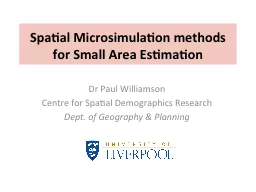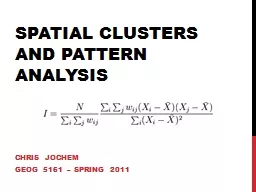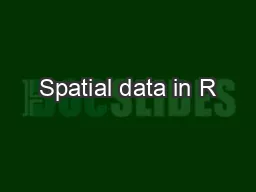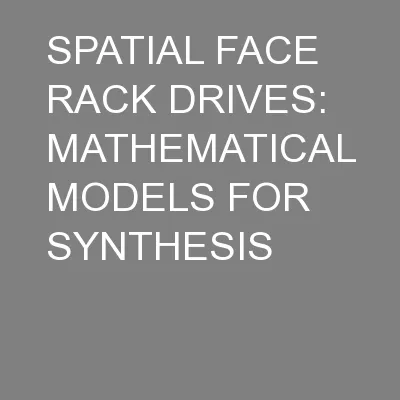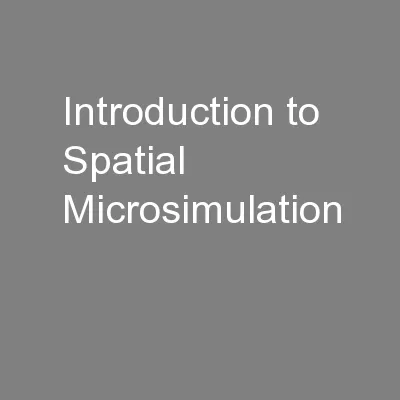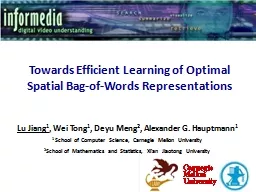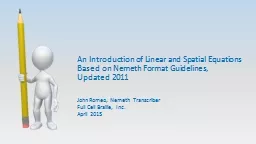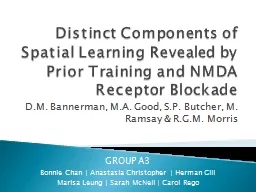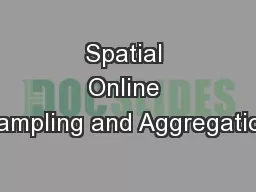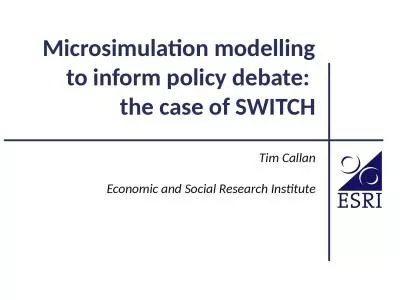PPT-Spatial Microsimulation
Author : karlyn-bohler | Published Date : 2018-02-27
methods for Small Area Estimation Dr Paul Williamson Centre for Spatial Demographics Research Dept of Geography amp Planning 1 Direct survey estimation a recap
Presentation Embed Code
Download Presentation
Download Presentation The PPT/PDF document "Spatial Microsimulation" is the property of its rightful owner. Permission is granted to download and print the materials on this website for personal, non-commercial use only, and to display it on your personal computer provided you do not modify the materials and that you retain all copyright notices contained in the materials. By downloading content from our website, you accept the terms of this agreement.
Spatial Microsimulation: Transcript
Download Rules Of Document
"Spatial Microsimulation"The content belongs to its owner. You may download and print it for personal use, without modification, and keep all copyright notices. By downloading, you agree to these terms.
Related Documents

